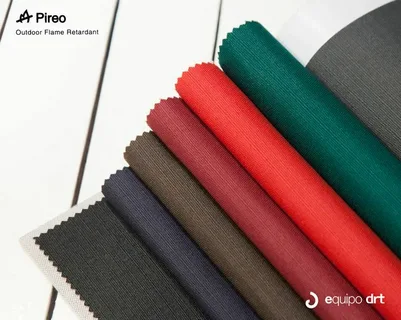Why Contract Fabrics Matter: A Designer’s Guide to Durable, Compliant Interiors
When you’re designing commercial interiors, functionality and compliance are just as important as style. From hotel lobbies and restaurants to hospitals and offices, the materials you choose must be safe, durable, and practical.
Enter: contract fabrics — the go-to textile solution for spaces that need to look amazing and perform under pressure.
This guide breaks down everything you need to know: what contract fabrics are, why they matter, and how to use them to elevate your next interior project.
📘 Table of Contents
-
Introduction to Contract Fabrics
-
Key Benefits of Using Contract Fabrics
-
Performance Features to Look For
-
Commercial Sectors That Rely on Contract Textiles
-
Flame Retardancy & Legal Standards
-
Choosing Fabrics by Function
-
Style & Design Trends in Contract Fabrics
-
Sustainability and Eco-Friendly Materials
-
How to Source from Reliable Suppliers
-
Final Thoughts
-
FAQs
Introduction to Contract Fabrics
So, what are contract fabrics?
Contract fabrics are commercial-grade textiles developed to meet high-performance, safety, and regulatory standards in public and commercial environments.
They’re engineered to:
-
Withstand frequent use
-
Resist stains, moisture, and UV exposure
-
Pass strict flammability and durability tests
-
Maintain their look and feel over time
-
Provide easy maintenance and hygienic properties
These fabrics are used in furniture upholstery, curtains, partitions, panels, headboards, and even wall coverings across hotels, hospitals, offices, retail shops, and more.
Key Benefits of Using Contract Fabrics
Why should you use contract-grade materials instead of standard residential fabrics? Here’s why:
🔒 1. Safety & Compliance
Contract fabrics must meet government-regulated fire safety standards, making them essential for public spaces where safety is critical.
🧼 2. Cleanability
Most contract fabrics are treated to resist moisture, stains, and microbes, making them ideal for healthcare, hospitality, or education.
💪 3. Longevity
Built for high-traffic environments, these fabrics often boast rub counts exceeding 50,000–100,000 cycles—ensuring your space looks great for years.
🎨 4. Style Without Sacrifices
Thanks to modern innovations, contract fabrics come in trendy textures, custom colors, and even digitally printed designs.
Performance Features to Look For
Not all contract fabrics are created equal. Here are essential specs and certifications to evaluate:
| Feature | What It Means |
|---|---|
| Rub Count | Measures abrasion resistance (Martindale or Wyzenbeek test) |
| FR Certification | Meets fire retardancy laws (e.g., BS 5867, Crib 5, NFPA 701) |
| Moisture Resistance | Resists water, spills, and mold |
| Antimicrobial Finish | Prevents bacterial growth—critical in medical or food areas |
| UV Resistance | Prevents fading in sunlit areas |
| Stain Resistance | Repels liquids and dirt |
| Bleach Cleanable | Safe for hospital-grade disinfectants |
Always ask for technical data sheets before purchasing.
Commercial Sectors That Rely on Contract Textiles
Here’s how contract fabrics serve a wide variety of industries:
🏢 Office Spaces
-
Ergonomic chairs
-
Privacy curtains in open-plan areas
-
Reception lounge seating
🏨 Hotels & Hospitality
-
Headboards, sofas, and banquet seating
-
Coordinated drapes and blinds
-
Bed throws and cushions
🏥 Healthcare
-
Bleach-cleanable medical seating
-
Antimicrobial curtains for patient rooms
-
Wipeable surfaces for infection control
🏫 Education
-
Tough seating fabric for classrooms and auditoriums
-
Durable curtains and cubicle panels
-
Easily cleaned cafeteria furniture
🛍️ Retail & Restaurants
-
Brand-aligned colors and prints
-
Durable booth upholstery
-
Coordinated window treatments
Flame Retardancy & Legal Standards
Fire safety is non-negotiable. Using non-compliant fabrics can lead to serious legal consequences or insurance issues.
Common Fire Standards:
| Standard | Applies To | Region |
|---|---|---|
| BS 5867 Part 2 | Curtains & drapes | UK |
| BS 7176 (Crib 5) | Upholstered seating | UK |
| NFPA 701 | Drapery fabrics | USA |
| CAL TB 117 | Upholstered furniture | USA |
| IMO A652 | Marine interiors | International |
Tip: Always request a flame certificate when specifying or ordering fabric for commercial interiors.
Choosing Fabrics by Function
Each area of a commercial interior has different performance demands. Choose accordingly:
| Area | Must-Have Properties |
|---|---|
| Reception Areas | UV stability, easy-to-clean, modern textures |
| Restaurants | Stain resistance, Crib 5, moisture repellent |
| Hospitals | Antimicrobial, waterproof, bleach-cleanable |
| Offices | Acoustic performance, comfort, neutral tones |
| Hotels | Coordinated soft furnishings, FR compliant |
Style & Design Trends in Contract Fabrics
Gone are the days of stiff, colorless contract fabrics. Today’s options rival the best residential and luxury lines. Designers can choose from:
-
Rich velvets and boucle
-
Faux leather and suede
-
Organic textures (linen-look, woven tweed)
-
Metallic accents and sheen
-
Branded and digitally printed options
-
Bold geometric or abstract patterns
Most manufacturers now collaborate with top designers to offer collections that blend performance and style.
Sustainability and Eco-Friendly Materials
Contract fabric manufacturers are embracing the future with eco-conscious materials that help buildings meet LEED and WELL certifications.
Look for:
-
Recycled polyester (rPET) from plastic bottles
-
Low-VOC finishes and dye processes
-
Cradle to Cradle Certified™ products
-
Oeko-Tex® Standard 100 certification
-
GREENGUARD Gold Certified fabrics for indoor air quality
Sustainable fabrics are no longer a niche — they’re a smart standard.
How to Source from Reliable Suppliers
Choosing the right supplier ensures that your project stays compliant and on-brand. Look for companies that offer:
✔️ Key Services:
-
Free sample requests
-
Fire test certificates
-
Technical specifications
-
Coordinated fabric collections
-
Custom color/branding options
-
Stock availability and fast delivery
🔝 Top Contract Fabric Brands:
-
Camira (UK) – Acoustic and sustainable fabrics
-
Kvadrat (Denmark) – Luxury contract ranges
-
Panaz (UK) – Healthcare and hospitality specialists
-
Maharam (US) – High-end textures and patterns
-
Chieftain Fabrics (Ireland) – Heavy-duty faux leather
-
Agua Fabrics (UK) – Waterproof, Crib 5 upholstery
Final Thoughts
Contract fabrics may work behind the scenes, but they do more heavy lifting than any other interior element. When chosen correctly, they bring together:
✅ Fire safety
✅ High performance
✅ Easy maintenance
✅ Sustainable values
✅ Beautiful aesthetics
Whether you’re designing a workplace, outfitting a hotel, or building a medical clinic, these fabrics ensure your space meets both functional and visual expectations.
Want your commercial design to stand the test of time? Start with the right fabric.
FAQs
1. Are contract fabrics only for large-scale commercial projects?
Not at all. They’re ideal for smaller businesses, rental units, home offices, and any area that needs high durability and easy cleaning.
2. How do I know if a fabric is contract-grade?
Ask for rub test data, fire certifications, and maintenance instructions. The supplier should provide these on request.
3. Can I customize colors or patterns?
Yes. Many suppliers offer custom color matching and branded printing — ideal for hotels, restaurants, and retailers.
4. What’s the most important certification to look for?
Fire certification is critical — look for BS 5867 or Crib 5 in the UK, or NFPA 701 in the US, depending on the fabric’s use.
5. Are eco-friendly contract fabrics as durable as traditional ones?
Yes! Innovations in sustainable materials mean you can have performance, safety, and sustainability all in one fabric.
Sponsor post:

